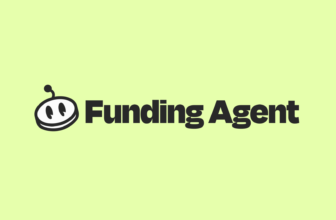
Landing Pages: The Ultimate Tool for Affiliate Marketers – 8 easy steps
Are you an affiliate marketer struggling to convert your traffic into leads or sales? Do you find it challenging to capture the attention of your audience and convince them to take action? Well, fret not, my friend, because the ultimate guide to creating effective landing pages is here!
Landing pages are an essential tool in an affiliate marketer’s arsenal, enabling them to drive conversions and grow their business. However, creating a landing page that converts can be a daunting task, requiring careful planning and execution. That’s where this guide comes in – to help you create landing pages that are not only visually appealing but also highly effective in converting visitors into leads or sales.
In this guide, we will walk you through the steps of creating an effective landing page, from defining your goal to optimising it for mobile devices. We’ll cover everything you need to know, including how to understand your audience, craft compelling headlines, create engaging content, use high-quality visuals, include social proof, and create clear calls-to-action. By the end of this guide, you’ll have all the knowledge and tools you need to take your affiliate marketing game to the next level!
So, buckle up and get ready to learn the art of creating effective landing pages that will skyrocket your conversions and grow your business!
Why are Landing Pages Important for Affiliate Marketers?
A landing page is a standalone page that visitors land on after clicking on a link from an advertisement, social media post, or search engine result. The purpose of a landing page is to convert visitors into leads or customers by persuading them to take action.
Here are some reasons why landing pages are important for affiliate marketers:
- Increases Conversion Rates: A landing page is designed to focus visitors’ attention on a specific call-to-action (CTA) and persuade them to take action. By removing distractions and presenting a clear value proposition, you can increase your conversion rates significantly.
- Targeted Messaging: Landing pages allow you to target specific audiences with customised messaging. By tailoring your message to the visitor’s needs and interests, you can increase the chances of conversion.
- A/B Testing: Landing pages are great for A/B testing different messaging, layouts, and CTAs. By testing different variations, you can optimise your landing page for maximum conversion rates.
- Cost-Effective: Compared to other forms of advertising, landing pages are relatively inexpensive to create and maintain. They can provide a high return on investment (ROI) for affiliate marketers.

How to Create an Effective Landing Page
Creating an effective landing page is an art form. It requires a careful combination of planning, creativity, and execution to capture your audience’s attention and lead them to take action. With these tips, you can create a landing page that will stand out and drive conversions.
Define Your Goal:
Before you even start crafting your landing page, you need to have a clear goal in mind. What is it that you want visitors to do? Do you want them to purchase a product, sign up for a service, or simply provide their contact information? Whatever your goal may be, make sure it is specific, measurable, and achievable.
Know Your Audience:
To create an effective landing page, you must understand your target audience. Who are they, and what are their needs and pain points? By understanding your audience, you can create messaging that resonates with them, and ultimately, increases the chances of conversion.
Craft a Compelling Headline:
Your headline is the first thing that visitors see when they land on your page. It should be clear, concise, and compelling enough to grab their attention. Your headline should communicate the value proposition of your offer and convince visitors to keep reading.
Create Engaging Content:
Your content should be engaging, easy to read, and relevant to your audience. Use short paragraphs, bullet points, and subheadings to break up your content and make it easier to read. Your content should address the visitor’s pain points and needs and provide a clear solution.
Use High-Quality Images and Videos:
Images and videos can help you communicate your message more effectively and increase engagement. Use high-quality visuals that are relevant to your offer and captivate visitors’ attention. Make sure your images and videos are optimised for fast loading times.
Include Social Proof:
Social proof is a powerful tool for building trust and credibility with visitors. Include testimonials, reviews, and ratings from satisfied customers to demonstrate the value of your offer. It helps visitors to make an informed decision, and in turn, leads to conversions.
Create a Clear Call-to-Action:
Your call-to-action (CTA) should be clear, prominent, and compelling. Use action-oriented language that motivates visitors to take action. Make sure your CTA stands out from the rest of the page and is easy to find.
Optimise for Mobile:
In this digital age, mobile optimisation is a must. Make sure your landing page is responsive and optimised for different screen sizes. Test your landing page on different devices to ensure it looks and functions correctly. Remember, a mobile-friendly landing page can make all the difference in the world.
Creating an effective landing page takes time and effort, but it is worth it in the end. By following these tips, you can create a landing page that resonates with your target audience, captures their attention, and ultimately drives conversions. So, take your time, be creative, and don’t forget to track your results. Happy landing page building!
Common Landing Page Mistakes to Avoid
Creating an effective landing page requires careful planning and execution. Here are some common landing page mistakes to avoid:
- Too Much Information: Your landing page should be focused on a specific goal and provide relevant information. Avoid overwhelming visitors with too much information and distracting elements.
- Weak Headline: Your headline is the most critical element of your landing page. Make sure it’s clear, compelling, and communicates the value of your offer.
- Poor Design: Your landing page design should be clean, simple, and easy to navigate. Avoid using too many colours, fonts, and graphics that can distract visitors.
- Lack of Social Proof: Social proof is crucial for building trust and credibility with visitors. Make sure to include testimonials, reviews, and ratings from satisfied customers.
- Weak Call-to-Action: Your call-to-action should be clear, prominent, and compelling. Use action-oriented language that motivates visitors to take action.
FAQ about Landing Pages
Q: How long should my landing page be?
A: Your landing page should be long enough to provide the necessary information but not so long that visitors get overwhelmed. A good rule of thumb is to aim for around 500 to 1000 words.
Q: Can I use the same landing page for different campaigns?
A: While you can use the same landing page for different campaigns, it’s best to tailor your landing page to the specific campaign and audience.
Q: Should I include navigation on my landing page?
A: It’s best to avoid including navigation on your landing page to avoid distracting visitors from the main goal.
Q: How do I measure the success of my landing page?
A: You can measure the success of your landing page by tracking the conversion rate, bounce rate, and time on page.
Conclusion
Creating effective landing pages is essential for any affiliate marketer looking to increase conversions and earn more commissions. By following the steps outlined in this guide, you can create landing pages that grab visitors’ attention, persuade them to take action, and achieve your goals.
Remember to define your goal, know your audience, craft a compelling headline, create engaging content, use high-quality images and videos, include social proof, create a clear call-to-action, and optimise for mobile.
Avoid common landing page mistakes such as too much information, weak headline, poor design, lack of social proof, and weak call-to-action.
We hope this guide has been helpful in creating landing pages that convert. Happy optimising!







